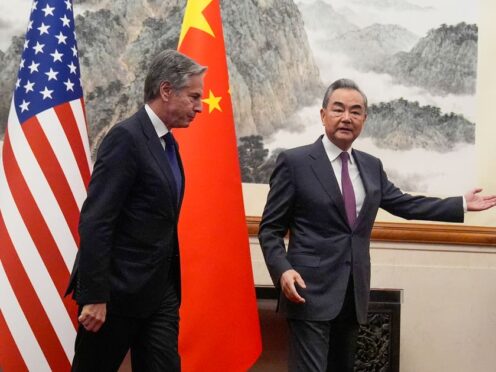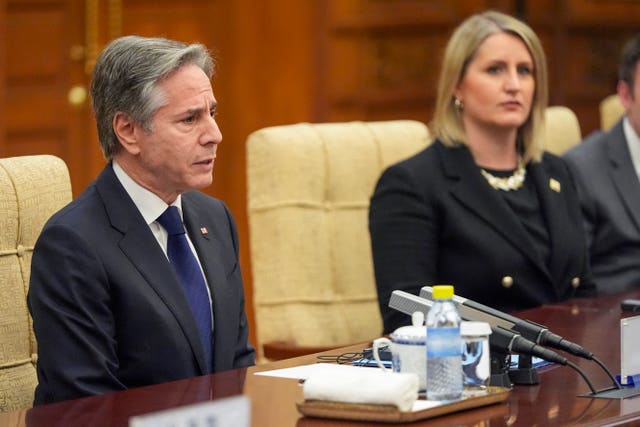
The United States and China butted heads over a number of contentious bilateral, regional and global issues as US secretary of state Antony Blinken met on Friday with Chinese foreign minister Wang Yi and both men warned of the dangers of misunderstandings and miscalculations.
The meeting, on the final day of Mr Blinken’s second visit to China in the past year, came as talks between the countries have expanded in recent months even as differences have grown and become more serious, raising concerns about the potential for conflict between the world’s two largest economies.
Mr Blinken and Mr Wang each underscored the importance of keeping lines of communication open but they also lamented persistent and deepening divisions that threaten global security.
Those divisions were highlighted earlier this week when US President Joe Biden signed a massive foreign aid bill that contains several elements that the Chinese see as problematic.

“Overall, the China-US relationship is beginning to stabilise,” Mr Wang told Mr Blinken. “But at the same time, the negative factors in the relationship are still increasing and building and the relationship is facing all kinds of disruptions.
“Should China and the United States keep to the right direction of moving forward with stability or return to a downward spiral? This is a major question before our two countries and tests our sincerity and ability.”
Mr Wang also outlined, without being specific, well-known Chinese complaints about US policies and positions on the South China Sea, Taiwan, human rights and China’s right to conduct relations with countries it deems fit.
“China’s legitimate development rights have been unreasonably suppressed and our core interests are facing challenges,” he said, demanding the US refrain from interfering in China’s internal affairs.
Mr Blinken responded by saying that the Biden administration places a premium on US-China dialogue even on issues of dispute. He noted there had been some progress in the past year but suggested that talks would continue to be difficult.
“I look forward to these discussions being very clear, very direct about the areas where we have differences and where the United States stands, and I have no doubt you will do the same on behalf of China,” Mr Blinken told Mr Wang.
“There is no substitute in our judgment for face-to-face diplomacy in order to try to move forward, but also to make sure we’re as clear as possible about the areas where we have differences at the very least to avoid misunderstandings, to avoid miscalculations.”
Mr Blinken arrived in China on Wednesday, visiting Shanghai shortly before Mr Biden signed the 95 billion dollar (£76 billion) foreign aid package that has several elements likely to anger Beijing, including 8 billion dollars to counter China’s growing aggressiveness towards Taiwan and in the South China Sea.
It also seeks to force TikTok’s China-based parent company to sell the social media platform.
China and the United States are the major players in the Indo-Pacific. Washington has become increasingly alarmed by Beijing’s growing aggressiveness in recent years towards Taiwan and its smaller Southeast Asian neighbours with which it has significant territorial and maritime disputes in the South China Sea.
China has railed against US assistance to Taiwan and immediately condemned the aid as a dangerous provocation. It also strongly opposes efforts to force TikTok’s sale.
The bill also allots 61 billion dollars for Ukraine to defend itself from Russia’s invasion. The Biden administration has complained loudly that Chinese support for Russia’s military-industrial sector has allowed Moscow to subvert western sanctions and ramp up attacks on Ukraine.
US officials have said China’s ties with Russia would be a primary topic of conversation during Blinken’s visit, and just before Friday’s meetings began, Russian President Vladimir Putin announced he would visit China in May.

Enjoy the convenience of having The Sunday Post delivered as a digital ePaper straight to your smartphone, tablet or computer.
Subscribe for only £5.49 a month and enjoy all the benefits of the printed paper as a digital replica.
Subscribe